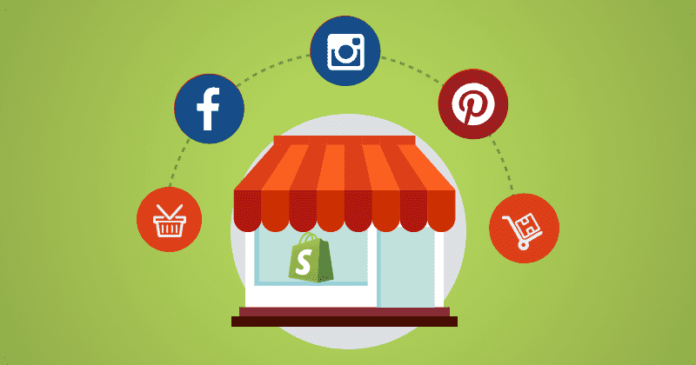Are you getting started with Shopify? You’re likely to have a lot of questions about how this leading e-commerce platform works. One of the most common ones is: “Does Shopify offer integration with social media?” The answer is a resounding ‘yes!’
Shopify makes it incredibly easy to sync your Facebook Shop with your store and even add a ‘Buy’ button to an existing page on your social media page. Not only that, but you can also share blog posts from your Shopify store directly to your social media. Plus, some Shopify themes come with social media buttons for easy integration. If you need help, migration services are available to make the process as smooth as possible.
If you’re eager to join the ranks of store owners who’ve seen success using this integration, you’re in the right place. Keep reading to find out how you can use the power of social media to boost your e-commerce sales on Shopify.
Integrating Your Shopify Store with Facebook
Why you should integrate your Facebook account into your storefront might pique your interest. It turns out that many factors contribute to this, including:
- Enhancing the store’s overall quality.
- Making things easier for your customers.
- Improve the effectiveness of your processes.
You can simplify your marketing with tools like dynamic ads and extensions for Facebook shops. Social media’s other features can help you increase engagement and customer trust. Naturally, incorporating social media will enable you to increase overall sales.
Are you currently using your social media presence to your advantage? Do your followers know that you run a Shopify store?
As a store owner, it is important to ask yourself if you have established corporate accounts on both Facebook and Instagram. If you haven’t, then you should take action and create business pages on each platform with utmost haste. Integrating your Shopify store will be easily achievable once you have done so. There are multiple approaches you can take to pull it off.
Installing Facebook’s Tracking Pixel for Shopify
Facebook’s Tracking Pixel is an incredibly useful tool for making the most of your social media. It can serve two main purposes for your Shopify store. Firstly, It tracks the activity of users on both your Shopify store and Facebook account. This means that you can easily assess the effectiveness of your Facebook ads and the impact they’re having on your store. Additionally, it also allows you to retarget those users who have taken certain actions on your website.
For instance, let’s say you want to target people who have just clicked onto your landing page but quickly left without buying anything. You can set up an automated message for these people, expressing your willingness to make improvements and offering them something more, such as discounts or bonuses to help convince them to go through with their purchase. By doing this, you’re showing that you value their business, and this could make the difference between them choosing to put an item in their cart or to move onto the next site.
Here are the steps you’ll need to take to install the Tracking Pixel:
- Navigate to the Facebook Ads Manager in your Facebook account.
- Find your Pixels, which will be under Measure and Report, from there.
- Copy your Pixel ID number from the Pixel tab.
- Go to your Shopify admin page and sign in.
- Navigate to Preferences > Online Store.
- To locate the Facebook Pixel tab, scroll down.
- In the box that appears, type in your Pixel ID number.
From that point, you’re good to go. Without having to enter any code at all, your Pixel will start working right away. You can now monitor all of your Facebook activity from within your Shopify store.
Shopify Lite Plan for Social Media Selling
If you’re looking to sell products on your Facebook or Instagram page to your followers, Shopify Lite could be a great solution for you. It’s Shopify’s most affordable plan, costing only 9$ per month.
With this plan, you’ll gain access to Shopify’s quality payment processing and be able to process orders straight from your social media page, as well as shipping and various payment types. Furthermore, you’ll benefit from a free credit card reader and a POS system, granting you the possibility to also sell your products in pop-up stores and conferences.
No need to worry about setting up and managing a merchant store, Shopify Lite will take care of your sales for you, allowing you to reach and keep up with your existing social media audience. It’s a great way to benefit from the power of social media for marketing, while Shopify processes payments and handles shipping.
Sharing Blog Posts On Social Media
Are you utilizing the blog feature on your Shopify store for your customers? If you are, why not take full advantage of it by sharing your creations across your various social media accounts? Thankfully, the process is made effortless with Shopify – you wouldn’t want to just inundate your followers with product promotion after all. It’s important to take things a step further and share complete blog content that is specifically related to your industry in order to build stronger brand loyalty and spread the word about your business. As you compose your blogs, make sure to include answers to commonly asked questions as much as possible, as well as solutions to prevailing pain points. Always aim to create concise, relevant, and helpful content.
Once you’ve got your blog post completed to your satisfaction within Shopify, simply hit the share button to send that post to your preferred social media platform. It’s that simple!


